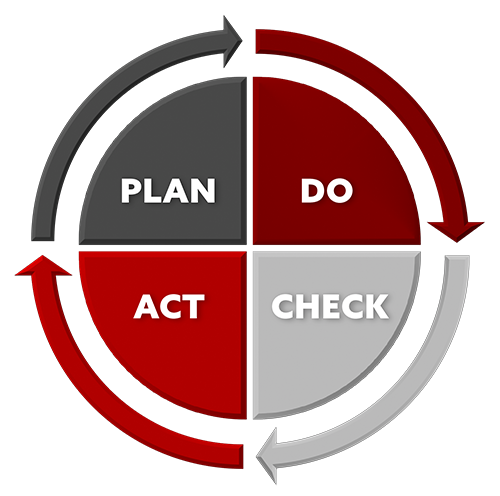[Post by Chuck Krugh, November 4, 2022]
In the coming weeks, I will be describing what I refer to as the Business Operating System (BOS). The BOS has a number of components that can be shown in a model. As I describe the different parts of the model each week, we will add them to the picture of the model you can see on this page. In the end, we will have discussed each element and created the full picture of the business operating system. But for now, I’ll start with the basics.
I have used this business operating system in several places I’ve managed in my career with good success in each case. It’s about how you implement and use your business plan to run your organization and, in turn, generate results.
We usually associate operating systems with computers, so using the term to describe a business system may be new to you. A business operating system (BOS) is the organizational structure used to run a company. It provides a recipe for a logical, organized and sequential approach to managing the business. It relies on company strategy to start the process, then the business process takes over, and if done well, ends with positive results.
As you can see in the model, the BOS I have used before and we are implementing in steps here at BIW is based on “Plan Do Check Act” (PDCA). The PDCA method provides a logical order in which people accomplish their tasks. I’ll discuss PDCA more over the next few weeks.
Looking at the model, the PDCA is in the center with an outer circle of four arrows. The arrows point in the same direction, moving clockwise. That forward clockwise movement represents the actual flow of work – in other words, moving our work forward by planning, doing, checking and acting.
Here’s what the four parts of the model – Plan, Do, Check, Act – mean:
- First we start with a Plan, in the top left corner. The Plan tells us what we have to do for work.
- Then we move to the dark red Do section, which represents the point of execution where we do our work.
- When we complete our work, we follow the gray arrow to Check, where we inspect or check the outcome of the work that we did in the previous step.
- If we had a problem at the point of execution or found an issue during the check process, we would then document the problem or issue in the next phase, Act. The Act phase also includes any problem solving we must do to prevent the problem from reoccurring again in the future.
- As we resolve the problem, we move back into the Plan phase, where we document any process changes required from problem solving or process improvement. These changes become part of the plan moving forward.
- As the cycle progresses, we execute the next task, represented by the Do and the process continues.
This description outlines the basic flow of one task. In building ships, we have thousands of tasks that follow a similar process although we do not break them down as formally or categorize the steps we take in this way.
The PDCA model is general enough to apply to all the jobs we have at BIW. This model is a good fit for the work we do for two major reasons.
First, we have an incredible need for safety and quality in all stages of the design and production process as well as in the jobs that support those efforts. Planning and checking support safety and quality.
Second, it is critical that we document improvements or changes in our workplans so that they can be incorporated into future ships. That will increase accuracy and eliminate rework.
We should all be planning, doing, checking and acting to ensure we safely execute high-quality work.
I look forward to continuing this dialog, but as always, stop me if you have any questions. See you on the deckplates!
Safely Execute High-Quality Work
Chuck
President, General Dynamics Bath Iron Works
Click here to view more From the Helm blog posts

